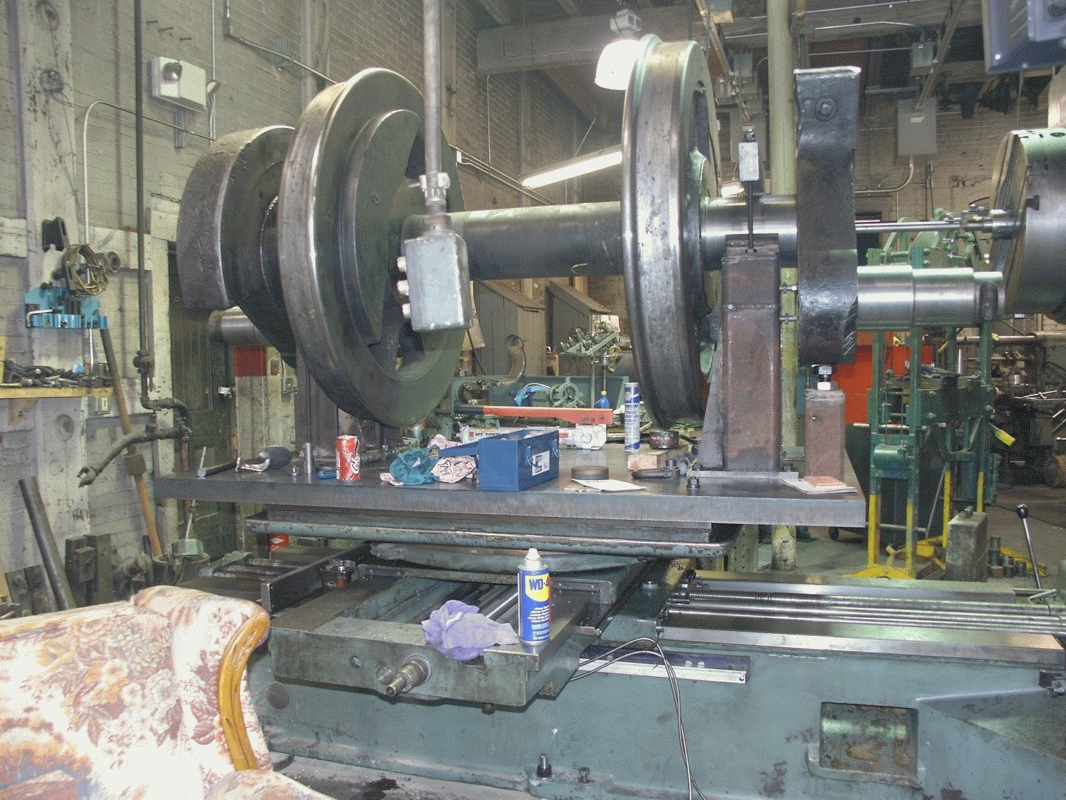adammil1 wrote:
Aarne H. Frobom wrote:
On a side note how do the quartering machines work? Anyone have any good videos/pictures of the process? It would be neat to see.
Adam, I ran a horizontal boring mill before and could suggest how I would do it using the set-up shown - but I don't know if the crank pin wear typically is so bad that no original machined crank pin diameter is available to indicate off of. Or, is the axle to crank pin distance known and you simply dial the x-axis over that distance and swing the crank pin up to the mill spindle and roughly indicate the pin in as best as possible?
Either way, is the usual procedure to machine the crank pin under-size and then sleeve it back to original spec?
Or are the crank pins removable?
If I knew how these are assembled and what is the intended purpose (what needs fixing?) I could suggest possible ways of doing it.

Steve